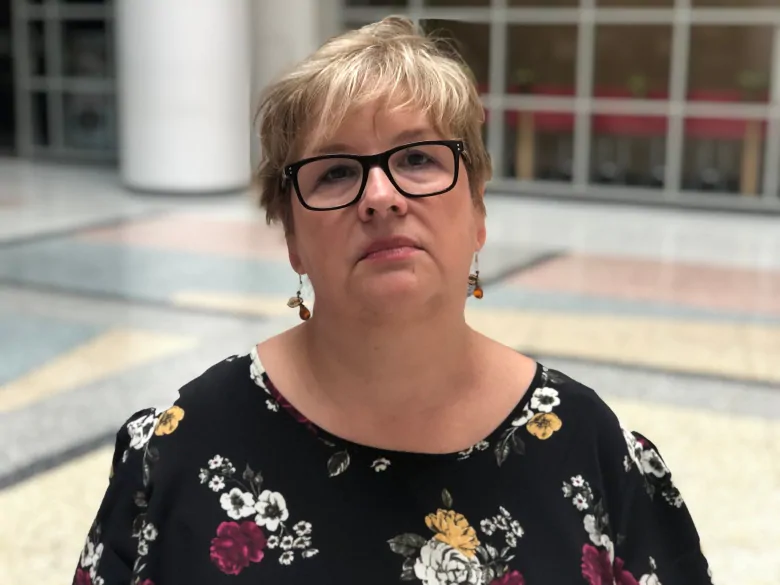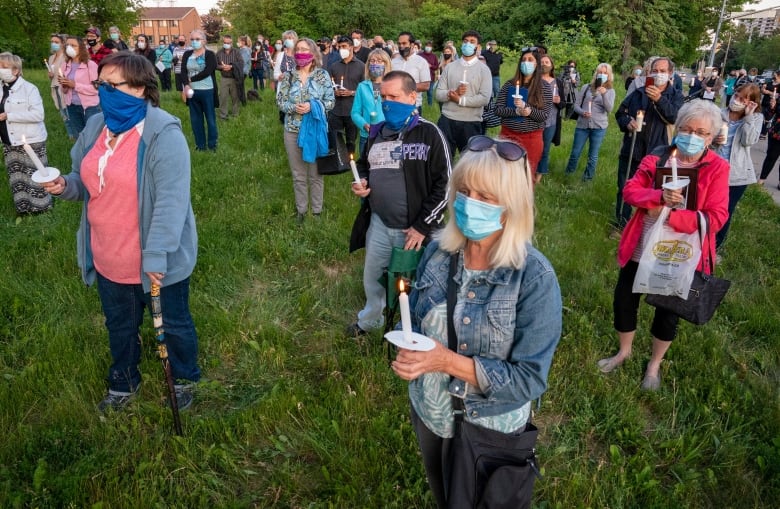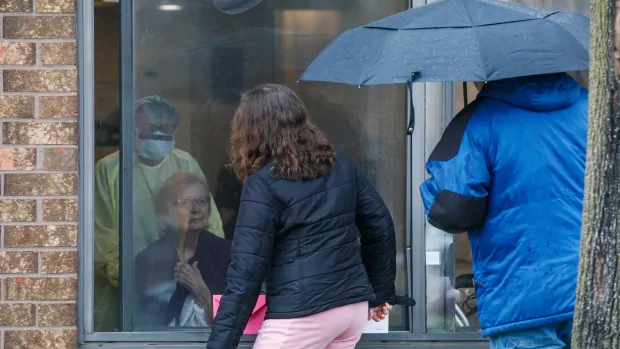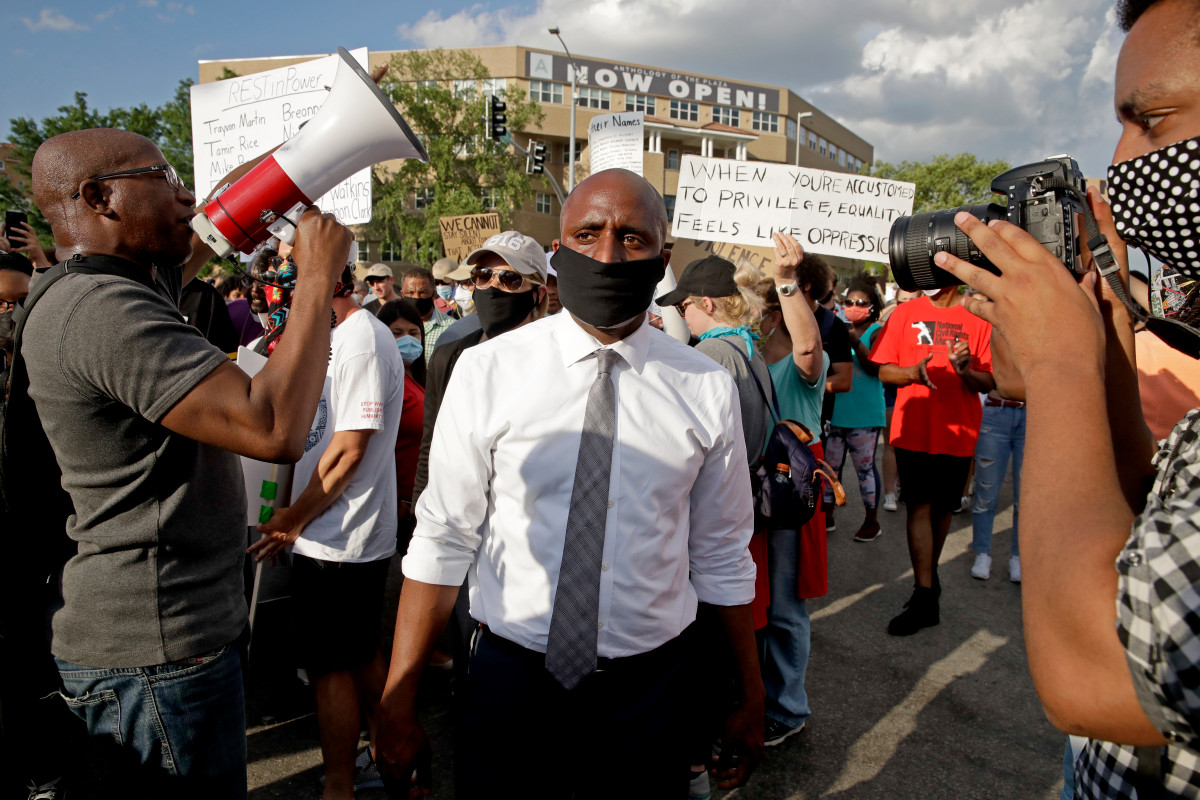Ontario’s government knew it was cutting thorough, effective investigations that helped identify infection control concerns in nursing homes three years before it made cuts in 2018, but did it anyway, a CBC Marketplace investigation has found.
And those cuts left nursing homes vulnerable and unprepared for the COVID-19 pandemic, particularly because they cut infection control oversight, according to experts.
The inspection process for long-term care homes used to include a minimum of one thorough, unannounced “resident quality inspection” (RQI) per year for each home. That was on top of additional inspections triggered by critical incidents or complaints from residents or their family members.
A CBC investigation previously showed the government all but eliminated proactive RQI inspections in the fall of 2018. The provincial Ministry of Health and Long-Term Care has posted on its website only 14 RQI inspections conducted in 2019, compared with an average of more than 650 annually in the three years preceding the cuts.
Marketplace has now learned that the ministry itself commissioned a qualitative analysis of Ontario’s long-term care inspection reports in 2015 that showed vast differences in the effectiveness of RQIs and other types of inspections.
An analysis of written notices issued per inspection concluded that an RQI “probes a home’s compliance standing three times more thoroughly than a Complaint Inspection and five times more thoroughly than a Critical Incident Inspection.”

The 2015 report also found that RQIs were the only type of inspection that would reliably find weaknesses in infection control protocol, such as hand hygiene, proper use of personal protective equipment, and proper cleaning and disinfection practices.
“I think that many outbreaks [during the pandemic] could have been avoided or lessened if they had been following the protocols, and the only way to make sure that they’re following protocols is to have those [resident quality inspections],” said Jane Meadus, a lawyer and advocate with the Advocacy Centre for the Elderly, who often deals with family complaints about the inspection process.

CBC Marketplace looked at some of the violation categories listed in the 2015 report that were deemed reliant on the more thorough RQIs. The data revealed that after 2018 cuts, infection prevention and control violations dropped 68 per cent in 2019 — the year preceding the pandemic.
Tamara Daly, a researcher with York University in Toronto who studies best practices in long-term care, said oversight is lost when inspections are reduced to primarily critical incident and complaints inspections.
“I think that this notion that things are safe and risk free until proven otherwise is a very dangerous situation because we’re dealing with people that are vulnerable,” she said.
The ministry told Marketplace that dropping RQIs was the result of a shift toward a “risk based inspection framework” that started in the fall of 2018 “following a recommendation by Ontario’s auditor general.”
READ | The analysis of Ontario’s quality inspection program:
“It allowed us to respond to urgent concerns and to clear an inspections backlog that had been accumulating,” a spokesperson said in a statement to CBC News.
But even though the overall number of inspections increased as the ministry focused its efforts toward critical incidents and complaints, the number of violations caught by inspections decreased.
Between 2015 and 2017, long-term care homes averaged over 7,000 total violations per year across all inspections. After Premier Doug Ford’s government changed the inspection control process in 2018, however, violations dropped. In 2019, total violations dropped to just over 5,000 — a nearly 30 per cent decrease.
A violation can be any non-compliance with the Long-Term Care Homes Act. If a care home is caught doing something contrary to the act, it receives a written notice. The act covers everything from the prevention of abuse and neglect to safe medication administration to social programs and housekeeping.
Government shouldn’t rely on families to catch ‘safety issues’: advocate
The government should not be relying on family members and staff to catch safety issues at care homes, Daly said.
“If the only thing that you have to worry then is about families who may complain, maybe you’re managing things differently than you would if you knew that you were going to get one of these resident quality inspections once a year,” she said.
Orchard Villa in Pickering, Ont., was one of the long-term care homes hardest hit by COVID-19 in the province. During the pandemic’s first wave, the home lost 70 residents to the virus — 30 per cent of its population.
The home has had problems with infection control in the past and received “written notices” for grime in washrooms, cobwebs, dead bugs and dirty beds. A written notice is a warning from the ministry that the home has been found in non-compliance. It may also come with a “voluntary plan of correction” or compliance order.

In 2019, the home received no infection control warnings.
By March 2020, it was obvious that the facility was struggling to contain the virus as deaths stacked up day after day.
An insider who works at Orchard Villa during the pandemic said management told her to disregard the home’s infection control protocols. CBC News is protecting the source’s identity because the source still works at the facility.
“At one point they told us: ‘Why are you wearing [a mask]? You’re scaring people. You’re scaring the residents,'” the source said.
The military was called in to help Orchard Villa and four other homes with their response to the virus at the end of April.
Its report identified serious infection control issues. It also found cleanliness issues, including cockroaches and dead flies.
Infection control expert advice ignored, nurse says
Cathy Legere, an infection control nurse who came out of retirement to volunteer at Orchard Villa during the pandemic, noticed infection control issues right away.
When the virus first hit Orchard Villa, she said, it was in a room with four beds.
“And so immediately my thought is: ‘You’ve got to get that patient out,'” said Legere.
WATCH | Nurse Cathy Legere says Orchard Villa long-term care home ignored her warnings about COVID-19:
But she said upper management didn’t listen. Even when the government ordered sick people to be separated from the healthy, she said management told her there were no free bedrooms.
Legere is now involved in a class-action lawsuit against Orchard Villa for its handling of the COVID-19 crisis.
A spokesperson from Orchard Villa told Marketplace in a statement that in recent weeks, the home has taken additional measures to “fortify the quality of care residents and families deserve,” including hiring a recruiter to bring in more staff, appointing a new head of infection prevention and control, and training number of staff members in infection control.
But Legere is left wondering what might have been. She said she doesn’t know what happened to the people in that room where that first patient fell ill because she stopped volunteering there when she felt management was not going to heed her advice.
“I don’t know. I can imagine but I don’t [know],” she said.
WATCH | Watch the full Marketplace investigation on The National:

Devoted web advocate. Bacon scholar. Internet lover. Passionate twitteraholic. Unable to type with boxing gloves on. Lifelong beer fanatic.





